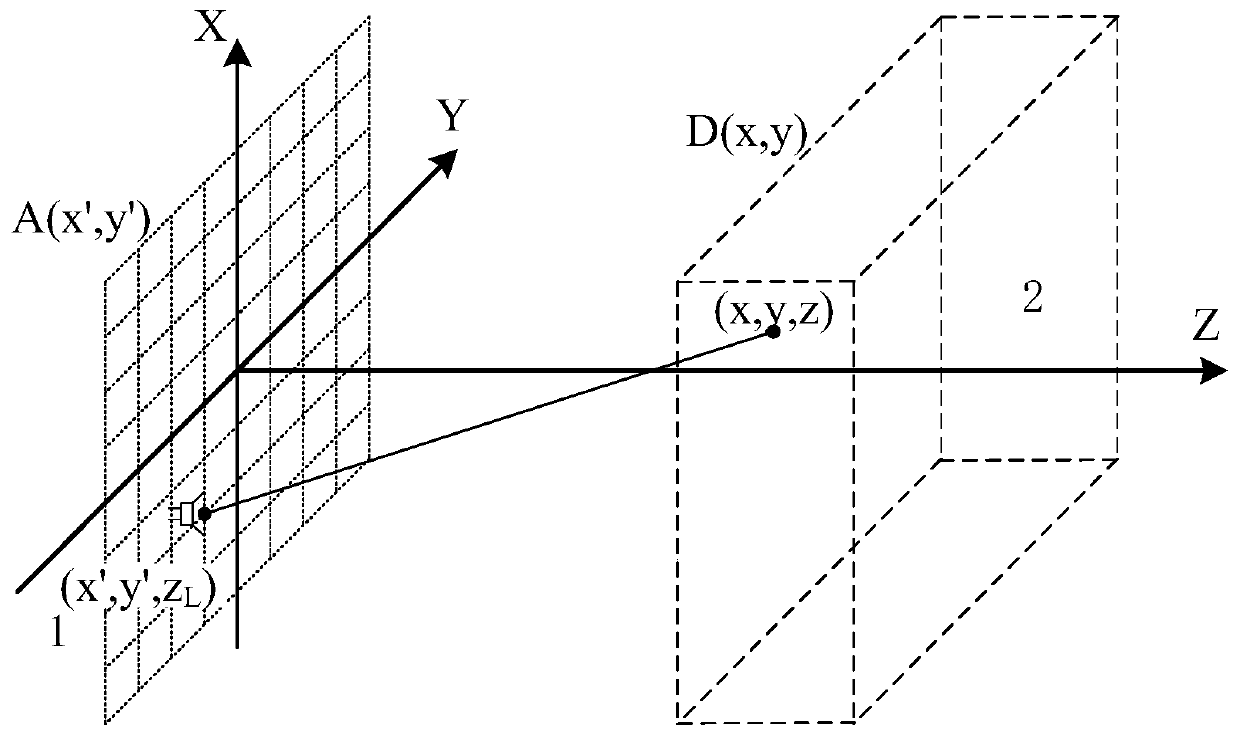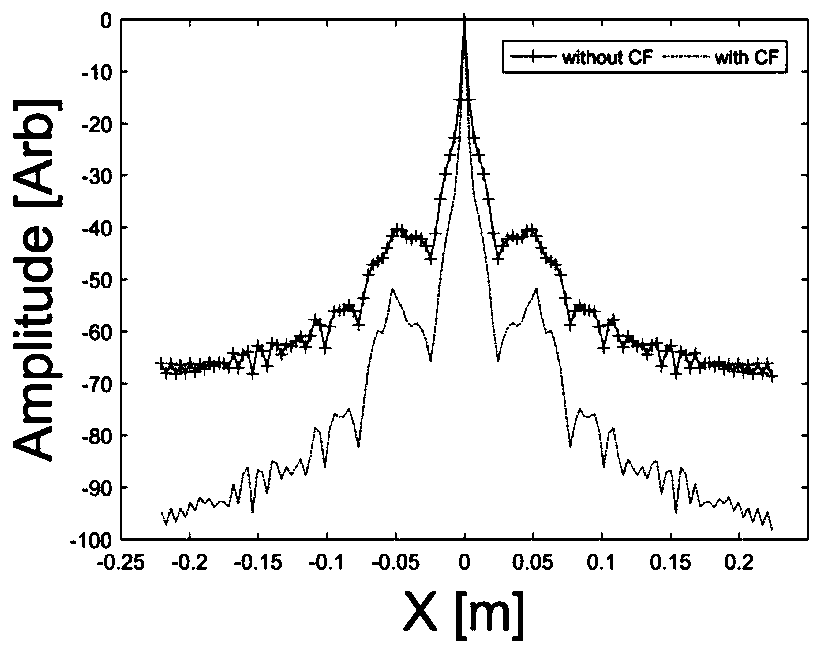High-speed super-resolution stationary point scanning imaging method based on wavenumber domain coherence factor
A coherence factor and super-resolution technology, applied in the field of synthetic aperture imaging algorithm, can solve the problem of non-existence of super-resolution imaging algorithm
- Summary
- Abstract
- Description
- Claims
- Application Information
AI Technical Summary
Problems solved by technology
Method used
Image
Examples
Embodiment 1
[0098] Example 1: Point Spread Function
[0099] In this embodiment, the point spread function performances of the traditional RMA and the coherence factor RMA imaging algorithms are respectively calculated. The main parameters used for the calculations are listed in Table 1.
[0100] Table 1 The main parameters used in the calculation of point extension function
[0101]
[0102] The point spread function is to adopt the ideal point target, generate the echo signal by the signal model of SA, and use the imaging algorithm to obtain the image of the point target. Depend on figure 2 As shown, the detailed steps of coherence factor RMA are as follows:
[0103] Step 1: The antenna receives and records the echo signal;
[0104] Step 2: Reflectance calculation.
[0105] This step actually uses RMA to directly reconstruct the 3D image of the target, mainly including the following steps:
[0106] Step 2.1: Perform two-dimensional FFT on the echo signal;
[0107] Step 2.2: f...
Embodiment 2
[0131] Embodiment 2: Electromagnetic Simulation Imaging
[0132] This embodiment is mainly used to verify the imaging performance of the coherence factor RMA for continuous targets. The main parameters used in the simulation are shown in Table 1, the only difference is that the values of the α and β parameters are different, namely α=1.5, β=0.00375.
[0133] Simulation consists of two steps:
[0134] Step 1: Using the method of moments to generate the scattered field of the target as echo data;
[0135] Imaging objects such as Figure 5 Shown is a two-dimensional model of an eight-leaf fan-shaped ideal electric conductor. The electromagnetic simulation uses a Hertzian electric dipole source, the source and the point detector are located at the same location, and only the electric field polarized in the same direction is considered.
[0136] Step 2: The echo data is processed by traditional RMA and coherence factor RMA respectively, and the image reconstruction is complet...
Embodiment 3
[0138] Embodiment 3: Imaging experiment results
[0139] In this embodiment, the performance of the coherence factor RMA is verified by a single-antenna stationary-point scanning imaging experiment. The experimental platform consists of two parts, namely the scanning platform and the vector network analyzer. The scanning platform is used to translate the sample to be imaged according to the prescribed method, allowing to define the moving range and moving step in the two dimensions of the plane; the vector network analyzer (Agilent, N5247A) is used to generate, transmit and receive echo signals, due to The instrument structure is coherent, so there is no need to correct the waveform of the carrier, and the sampled data S11 or S22 can be processed directly.
[0140] The imaging target is an eight-leaf metal sector, such as Figure 8 shown. The target body is fixed on the scanning platform, and the parameters of the experiment are listed in Table 3.
[0141] Table 3 Experime...
PUM
 Login to View More
Login to View More Abstract
Description
Claims
Application Information
 Login to View More
Login to View More - R&D
- Intellectual Property
- Life Sciences
- Materials
- Tech Scout
- Unparalleled Data Quality
- Higher Quality Content
- 60% Fewer Hallucinations
Browse by: Latest US Patents, China's latest patents, Technical Efficacy Thesaurus, Application Domain, Technology Topic, Popular Technical Reports.
© 2025 PatSnap. All rights reserved.Legal|Privacy policy|Modern Slavery Act Transparency Statement|Sitemap|About US| Contact US: help@patsnap.com



